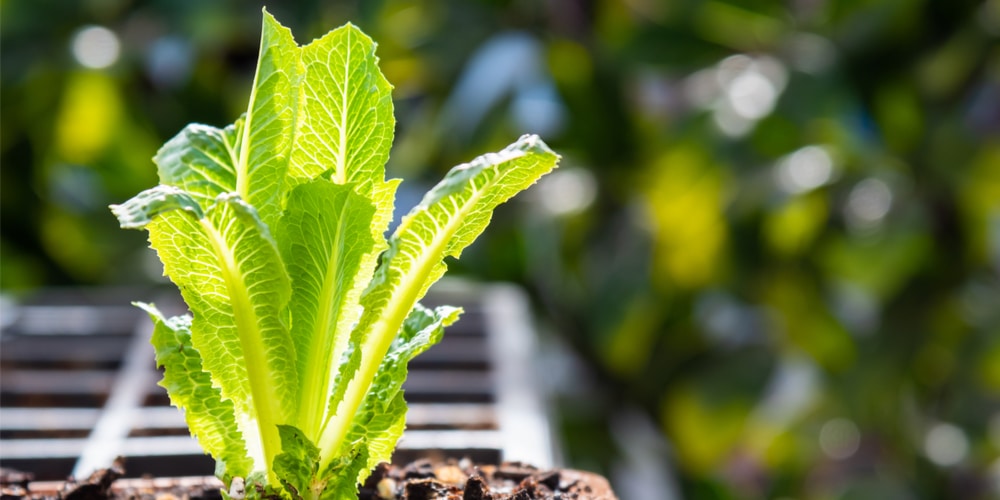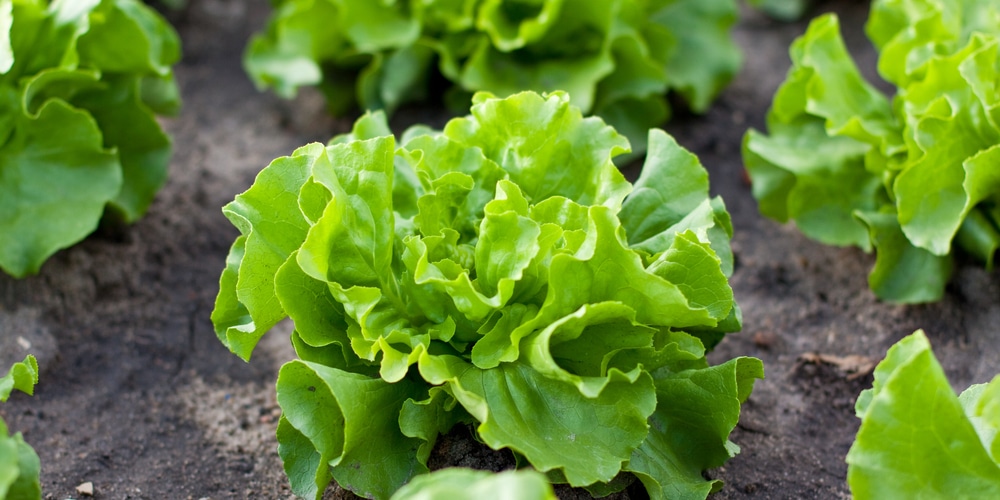Although summertime typically means warm weather and an abundance of fresh fruits and vegetables, it can be a little tricky to grow lettuce in summer, during these months. Lettuce is a cool-weather crop and prefers temperatures between 60-65 degrees Fahrenheit.
Gardeners often plant them in the early spring and fall, when the temperatures are more moderate. This gives lettuce enough time to grow and be ready for harvest before the hot summer months arrive.
There are, however, a few tips and tricks that you can use to successfully grow lettuce during the summer.
Choose a Lettuce Variety that is Well-Suited for the Warmer Weather

There’s nothing like a fresh, crisp salad on a hot summer day. And what could be more refreshing than lettuce grown in your own garden? But if you want to enjoy homegrown lettuce all summer long, it’s crucial to choose a well-suited variety for the warmer weather.
One of the best lettuce varieties for summer is Buttercrunch. This type of lettuce has a crisp texture and a sweet, nutty flavor that pairs beautifully with other summertime ingredients like tomatoes, cucumbers, and herbs.
Buttercrunch lettuce is also relatively heat-resistant, meaning it won’t bolt (go to seed) in the warm weather. Another good option for summer gardens is Crispino lettuce. This variety has a slightly bitter flavor and a crisp texture perfect for salads.
Other lettuce varieties that are heat-tolerant and can be grown in the full sun may include but are not limited to Romaine, Butterhead, Looseleaf, and Summercrisp.
Keep the Soil Moist
In the heat of summer, it can be difficult to keep lettuce hydrated. The trick is to keep the soil moist but not waterlogged. Water the soil deeply, waiting until it’s slightly dry to the touch before watering again.
This helps the roots grow deep and strong while discouraging fungal growth. Also, make sure to mulch around your lettuce plants. This helps insulate the soil and retain its moisture.
Check the soil’s moisture levels every few days by sticking your finger to the ground. If it feels dry several inches below the surface, it’s time to water.
Lettuce plants are more forgiving when you water them regularly. Summertime is often unpredictable, though, so it’s always a good idea to have a backup plan.
If you know there will be a week of hot, dry weather, consider covering your lettuce plants with row covers or shade cloths. This will help protect them from the sun and keep the soil moist.
Fertilize Regularly
The summer heat can be tough on lettuce, causing it to bolt and turn bitter. To keep your lettuce plants happy and productive, fertilize them on a regular basis. Lettuce is a heavy feeder and will benefit from regular fertilization.
A good rule of thumb is to apply fertilizer every two weeks. You can use either liquid fertilizer or granular fertilizer, but be sure to follow the directions on the package carefully. Over-fertilizing can burn the roots of your plants, so it’s important to err on the side of caution.
Start Planting in Pots Indoors
If you want to get a jump start on the growing season, start your lettuce plants indoors in pots. This way, you can transplant them into your garden when the weather is more conducive to growth.
To do this, fill pots with a high-quality potting mix and sow the seeds according to the package directions. Keep the soil moist and fertilize regularly. When the plants are big enough to handle, transplant them into your garden. Be sure to harden them off first by gradually acclimating them to outdoor conditions.
Cover the Plants
If you live in an area with hot summers, you may need to take extra measures to protect your lettuce plants from the heat. One way to do this is to cover the plants with a light-colored cloth or row cover. This helps to reflect the sun’s rays and keep the plants cool despite the warm temperatures.
You can also try growing lettuce in partial shade. This can be accomplished by planting taller plants on the north side of your garden to provide some natural shade or by erecting a makeshift shade structure with a tarp or cloth.
Transplant the Lettuce
Despite all the efforts, and if you’ve noticed that your lettuce is starting to wilt, dig them out and replant. This method “shocks” the plant. While it may seem like a bad thing, this method actually allows the lettuce to grow roots faster, giving them a chance to recover from the heat, delaying the seed formation.
Growing lettuce in summer: Final thoughts
Summertime and lettuce may not always go hand-in-hand, but with a little effort, you can enjoy fresh, homegrown lettuce all season long. Choose the right variety, keep the soil moist, provide some shade, especially during the hottest part of the day, and fertilize regularly.
Alternatively you may like to plant a fall garden that could include lettuce.
With these tips, you’ll be on your way to a bountiful harvest of crisp, delicious lettuce, even during the hot summer months!
Related Article: How to Grow Lettuce in Texas?

